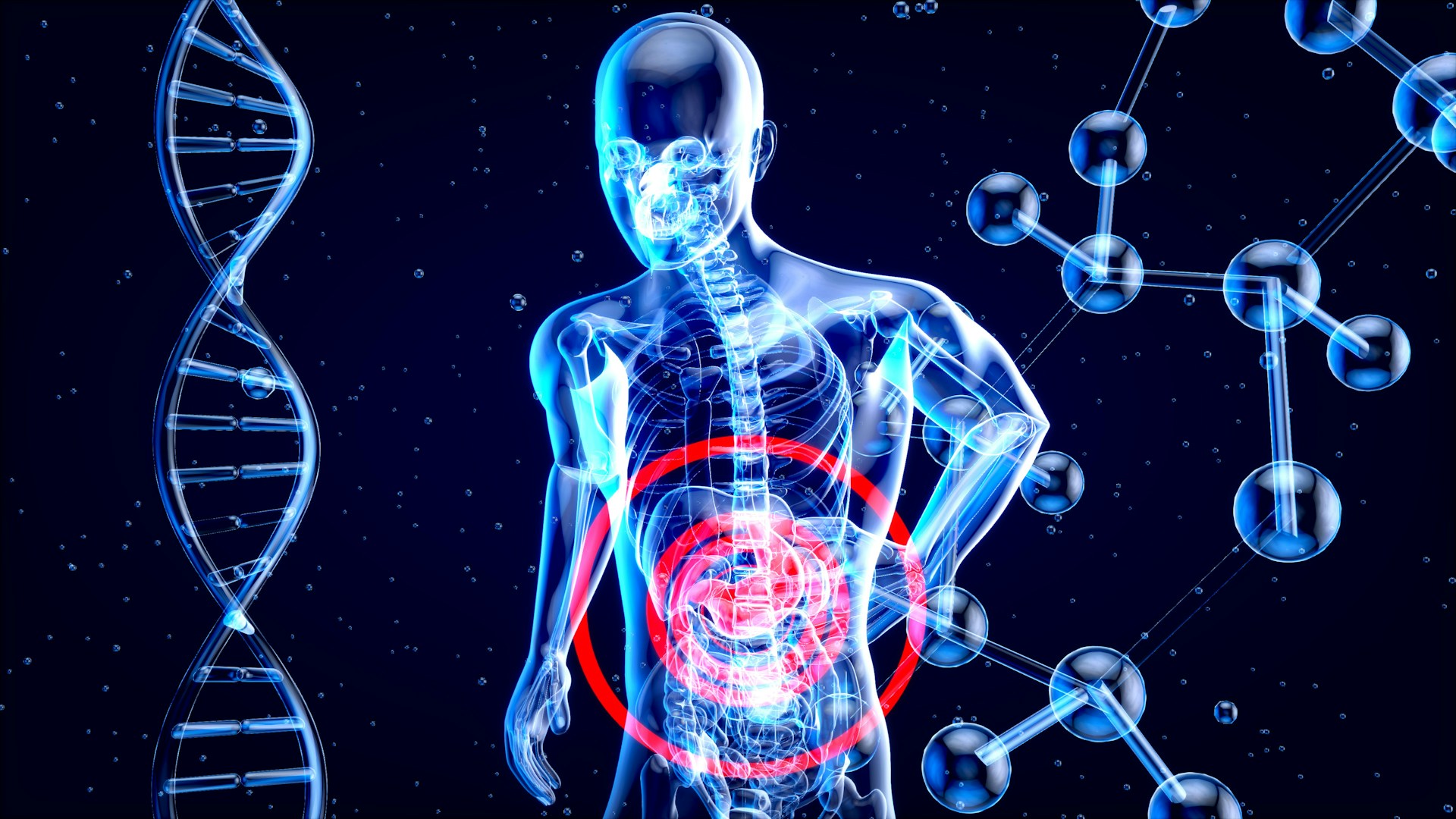Health
Navigating the Nutritional Supplement Surge: Expert Insights

The use of nutritional supplements has seen a significant rise, with a recent survey revealing that 75% of over 3,100 U.S. adults take some form of nutritional supplement. Among these, 52% reported using specialty supplements such as omega-3s, probiotics, or fiber. The surge in popularity can be attributed to various factors, including the pandemic and the convenience of online shopping, according to Johna Burdeos, RD, a registered dietitian.
However, the supplement industry is not without its critics. The lack of regulation by the U.S. Food & Drug Administration (FDA) raises concerns, and many question the necessity of dietary supplements for those who maintain a balanced diet. The debate continues, even among experts.
“Supplements are not usually the only possible solution for most adults to achieve and maintain good health,” says Maddie Pasquariello, MS, RDN. Rather than turning to supplements as the first line of defense against health problems, dieticians often recommend lifestyle changes such as diet and exercise modifications. However, in certain cases, supplements are recommended as a standard, or they may help fill in nutrient deficiencies in the diet, says Stephanie Greunke, RD, a registered dietician and member of Needed’s practitioner collective.
Despite the popularity of certain supplements like probiotics, experts and researchers argue that the data does not support the hype. Pasquariello warns against the deceptive marketing of greens powders, which claim to be filled with whole food sources of nutrients and pre- and probiotics. She suggests adding actual leafy greens to your diet instead.
The term “mega-doses” may sound appealing, but Burdeos advises caution. “Unless it is specified by your doctor, these kinds of supplements are a case of too much of a good thing,” she says. Overconsumption can lead to long-term impacts such as kidney problems from too much vitamin D and digestive issues from excessive vitamin C.
While some supplements, like creatine monohydrate, can reduce injury and speed recovery, Greunke warns against more expensive “buffered” and “advanced” versions, which claim better absorption but lack supporting evidence.
Navigating the supplement market can be challenging due to the lack of standardization. Experts offer insights to help consumers make informed choices. For instance, the term “chelated” on mineral bottles indicates that the mineral has been altered to improve absorption. However, research on chelated minerals is mixed and often based on small sample sizes.
Greunke also advises against multivitamins with iron due to nutrient competition. She suggests taking calcium and iron supplements separately and always consulting a doctor before adding iron to your supplement regimen.
How can you tell if your supplement is working? Greunke suggests looking for telltale signs such as diarrhea from high doses of magnesium citrate and vitamin C, or bright yellow colored urine from high doses of B-vitamins. Some supplements like vitamin B12 can yield quick improvements in energy, while others may have more subtle or long-term effects.
Pasquariello emphasizes the importance of consulting with your doctor about any supplements you’re taking to ensure they don’t interfere with any medications or treatments. She also suggests medical professionals can check nutrient levels in your blood before and after consuming a supplement for a specific period.
The choice of daily vitamins or supplements depends on individual needs. Pregnant or lactating individuals, for instance, should take a daily prenatal. Other potentially important supplements include magnesium, iron, and omega 3s. However, it’s crucial to consult a doctor before starting any supplementation, especially with iron.
For vegans and vegetarians, B12 is the most common deficiency, according to Pasquariello. Those on a keto diet should discuss vitamin D and calcium supplementation with their doctor. For muscle building, creatine monohydrate is recommended by Burdeos and Greunke. However, most experts don’t believe vitamins or supplements are necessary for weight loss.
For women, particularly those pregnant, prenatal vitamins with folate and iron are recommended. It’s advisable to start taking prenatal vitamins three months before trying to conceive. Vitamin D supplementation during pregnancy may protect against pre-eclampsia, pre-term birth, and gestational diabetes.
Let us know what you think, please share your thoughts in the comments below.

Health
Fresh Concerns: Top 12 Produce Items High in Pesticides

While we often consider fruits and vegetables as the healthier alternatives to processed snacks, the reality may be more complex. The Environmental Working Group (EWG), a health advocacy organization, releases an annual guide to inform consumers about the levels of pesticides present in produce. On March 20, the EWG unveiled its 2024 “Dirty Dozen” list, highlighting the 12 fruits and vegetables most contaminated with pesticides.
The latest report from the EWG is based on data from tests conducted by the U.S. Department of Agriculture (USDA) and the Food and Drug Administration (FDA). These tests involved 47,510 samples from 46 different types of fruits and vegetables.
“The USDA peels or scrubs and washes produce samples before they’re tested, whereas the FDA removes only dirt first,” the EWG clarified in its report.
Despite these cleaning methods, the tests detected 254 different pesticides in the produce samples.
“Pesticides are chemicals designed to kill living organisms that are considered pests, including insects, weeds and mold. Even after washing fruits and vegetables, pesticide residues remain on produce,” the EWG elaborates on its website. “Research shows that certain pesticides used on American produce are linked to cancer, hormone disruption, and cognitive and behavioral problems.”
The four pesticides most commonly found in the produce on the Dirty Dozen list were fludioxonil, pyraclostrobin, boscalid, and pyrimethanil, which are also fungicides, the EWG noted.
“Emerging evidence suggests many widely used fungicides may disrupt human hormone systems,” stated EWG senior toxicologist Alexis Temkin, PhD. “But more studies are needed to better understand the risks they—and all pesticides—pose to humans, particularly children.”
To protect yourself, the EWG advises purchasing organic versions of any produce on the Dirty Dozen list. The following fruits and vegetables have been identified as the most pesticide-contaminated, according to the organization’s recent report.
The EWG warns that green beans may contain traces of two insecticides, acephate and methamidophos, which have been associated with harm to the developing nervous system. These chemicals were found in approximately 8 percent of the non-organic green bean samples tested by the USDA in 2021 and 2022.
Blueberries have secured the 11th spot on the EWG’s Dirty Dozen list for two consecutive years.
“The most troubling pesticides found on blueberries were phosmet and malathion, chemicals known as organophosphate insecticides,” the EWG reported. “They kill many types of insects and are toxic to the human nervous system, especially children’s developing brains.”
Over 90 percent of cherry samples tested positive for residue of two or more pesticides, the EWG’s report revealed. The chemicals of concern found on this fruit were pyraclostrobin, linked with liver toxicity and metabolic disorders, and boscalid, associated with cancer and thyroid dysfunction.
Bell and hot peppers were found to have the second highest amount of individual pesticides, with 101 different chemicals detected on these items, according to the EWG.
Apples typically contain more than four different pesticides, some at high concentrations, the EWG warned.
Like cherries, over 90 percent of nectarine samples tested positive for residues of two or more pesticides.
The EWG reported an increase in the number of chemicals found on pears over the years. In its latest report, the organization found that over 60 percent of non-organic pears tested by the USDA contained traces of five or more pesticides, a significant increase from previous tests.
Almost all peaches are contaminated with pesticides, the EWG warned.
“A single peach sample could have traces of up to 19 different pesticides,” the organization stated.
The EWG’s new report also indicated that over 90 percent of grapes tested positive for two or more pesticides.
Kale, collard, and mustard greens were found to have the most pesticides, with 103 individual chemicals detected across these items, according to the EWG.
Spinach, another leafy green, tested positive for an average of seven different pesticides, including permethrin, which has been banned for use on food crops in Europe since 2000.
“At high doses, permethrin overwhelms the nervous system and causes tremors and seizures,” the EWG cautioned.
Strawberries topped the EWG’s Dirty Dozen list, as they are the “fresh produce item most likely to be contaminated with pesticide residues, even after they are picked, rinsed in the field and washed before eating,” the organization reported.
“The average American eats about eight pounds of fresh strawberries a year—and with them, dozens of pesticides, including chemicals that have been linked to cancer and reproductive damage, or that are banned in Europe,” the EWG warned.
Let us know what you think, please share your thoughts in the comments below.
Health
40-Year-Old Mom Reveals Unexpected Signs of a Life-Threatening Heart Attack

Heart health is a topic that gains more attention as we age. However, it’s not often a primary concern for middle-aged individuals, particularly women. A 40-year-old mother who recently suffered a “widowmaker” heart attack is now advocating for awareness of the unexpected symptoms she experienced prior to her cardiac event. This article aims to highlight these warning signs to promote safety and early detection.
“Widowmaker” heart attacks are severe medical emergencies, named for their high fatality rate. They occur when the left anterior descending (LAD) artery, which supplies half of the heart’s blood, becomes completely blocked due to cholesterol buildup, as explained by the Cleveland Clinic. This blockage deprives the heart muscles of blood, leading to their death.
“The ‘widowmaker’ is a lay term for a particular type of heart attack,” said Gary Niess, MD, an interventional cardiologist with Novant Health Heart & Vascular Institute. “Any artery closure can cause a heart attack where the heart muscle dies, but the widowmaker has a higher rate of mortality.”
Heart attacks are distressingly common, with over 800,000 people in the U.S. experiencing them each year. This equates to approximately one heart attack every 40 seconds. Heart attacks remain the leading cause of death for both men and women in the U.S.
The Cleveland Clinic states that the risk of heart attacks increases for men and people assigned male at birth (AMAB) starting at age 45, and for women and people assigned female at birth (AFAB) at age 50. However, heart attacks can occur at any age, as demonstrated by a 40-year-old woman named Jessica Charron.
In 2022, Charron began to feel unusual symptoms, including a tingling sensation that traveled down her neck to her back and arms, accompanied by chills. Initially, she attributed these symptoms to spending too much time outside on a hot day. However, as the symptoms intensified and came in waves, she realized something more serious might be happening.
“I just knew something was wrong,” she told Today. “I felt like this is just not a normal chill—not even a flu-like chill. It was different. It was more intense.”
Despite initial tests at the hospital not revealing any issues, Charron insisted something was wrong. Eventually, doctors discovered she was experiencing a “widowmaker” heart attack, with an 85 percent blockage in her LAD.
“I was absolutely shocked,” Charron told Today. “There was nothing leading up to that which would have indicated that I would be a candidate for a heart attack.”
Charron underwent surgery to place a stent in her artery and later had a triple bypass to address two other blockages. She now emphasizes the importance of awareness of heart disease risks, especially for women and AFAB individuals.
“I was young. I was healthy,” she told Today. “The biggest lesson learned for me is that heart disease doesn’t really discriminate.”
Laura Mauri, MD, chief scientific, medical, and regulatory officer at Medtronic, listed chest pain or pressure, shortness of breath, excessive sweating, and pain in the neck, arm, or back as common warning signs of a heart attack. However, symptoms can vary between individuals and genders. Quick action is crucial in surviving a heart attack.
“When you’re in an ambulance, getting early treatment actually saves lives,” Mauri told Today. “The good news is that in many cases, if a heart attack is detected early, the treatment can be pretty quick and not lead to a long hospitalization and lead to a full recovery. It’s not uncommon that people recovering from a heart attack go back to living even healthier lifestyles than they did before the heart attack.”
Let us know what you think, please share your thoughts in the comments below.
Health
Hidden Dangers: 5 Common Supplements That Can Harm Your Liver

Supplements are often seen as a beneficial addition to a healthy lifestyle, providing those necessary vitamins and minerals that might be missing from our diets. However, it’s important to remember that not all supplements are created equal. Some can even pose a risk to our vital organs, including the liver.
The liver plays a crucial role in detoxifying the body, as Alyssa Smolen, MS, RDN, a New Jersey-based registered dietician, explains. “Your liver naturally detoxifies the body. That’s its primary job,” she says. “However, too much of certain substances can harm the body’s ability to do this—including specific supplements that can interfere with this process.”
Given this, medical professionals emphasize the importance of monitoring what we consume and reducing or eliminating anything that could be harmful. Here are five supplements that could potentially damage your liver, as per doctors’ advice.
Green tea, while a popular beverage, can also be found in extract form as a supplement. However, Leann Poston, MD, a licensed physician and health expert for Invigor Medical, warns that it can cause liver injury in some individuals. “Unfortunately, it is currently unknown why it causes liver damage in some people and not others,” she reveals.
Sarah Alsing, MS, RD, owner of Delightfully Fueled, further cautions that green tea extract is often an ingredient in diet pills. “If you are looking into supplements advertised for weight loss, then make sure you read the label to see if it’s an ingredient,” she advises.
Black cohosh, a traditional herbal remedy often used to treat menopause symptoms, has also been linked to liver injury. “There have been case reports that link the herbal supplement black cohosh to liver injury,” says Nesochi Okeke-Igbokwe, MD, medical expert and CEO of Dr. Nesochi internal medicine practice. “However, more studies are needed to further investigate the use of this supplement with potential hepatotoxicity.”
Niacin, or vitamin B3, is essential for the body to convert food into energy, produce stress-related hormones, and improve circulation, according to Alsing. “It also aids with cholesterol control,” she adds. However, she warns that “high doses of niacin can damage the liver and affect coagulation, which is the body’s way of preventing excessive bleeding.”
Ground kava root, traditionally used in the Polynesian islands as a relaxation aid, can also be harmful to the liver when consumed in high amounts. “Just like alcohol, it can be harmful to the liver when consumed in high amounts,” warns Danielle Arnold, MS, LDN, clinical support specialist at Designs for Health. “In fact, some tradition states that kava was originally chewed and spit out because enzymes in the spit deactivate some of the liver-toxic compounds it contains.”
Finally, Vitamin A, while essential for vision and immunity, can cause liver damage when taken in excessive amounts. “Vitamin A doses that fall within the recommended daily allowance (RDA) are not associated with liver injury,” says Poston. “However, doses more than 100 times the RDA can cause acute liver injury. Excessive vitamin A can damage specialized liver cells, causing liver scarring and injury.”
While this information is based on expert advice and research, it’s always best to consult with your healthcare provider directly regarding any concerns about your medication or health.
Let us know what you think, please share your thoughts in the comments below.
-

 Health7 months ago
Health7 months agoPreventing Falls and Injuries for Seniors
-

 Nutrition7 months ago
Nutrition7 months ago5 AMAZING Dinner Recipes That Are Also HEALTHY
-

 Nutrition4 months ago
Nutrition4 months agoThe Aging Secret of Vitamin D Unveiled
-

 Health5 months ago
Health5 months agoDownsizing Tips: Simplifying Your Lifestyle
-

 Health2 months ago
Health2 months agoBoost Your Heart Health: Simple Tips for Seniors
-

 Health5 months ago
Health5 months agoRespiratory Health: Breathing Exercises for Seniors
-

 Movement4 months ago
Movement4 months agoChair Exercises: Staying Active While Seated
-

 Health2 months ago
Health2 months agoKate Middleton’s Health: Royal Recovery, Photo Controversy and Public Speculation